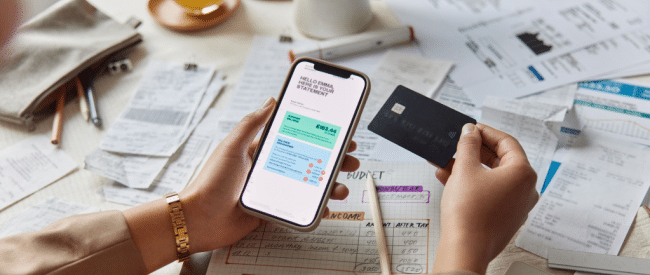In the cycle of non-retail billing and payments, bill presentment solutions handle the crucial step between the transaction and payment. As the official request for payment, generally in the form of a statement or invoice, presenting the bill when, where and how the consumer wants can drive on-time payments as well as strengthen or diminish customer satisfaction and loyalty.
For a long time, bill presentment came in one flavor. Traditional bill presentment solutions for mortgage and auto loans, property maintenance and homeownership association fees, medical services and other consumer financial obligations entailed paper, printing and postage: Composing and producing paper documents and mailing them to customers’ homes.
The rise of digital technologies has opened up more communication delivery options and has changed consumer behavior, including growing demand for bill presentment via email, text messaging, online portals and other electronic and mobile channels. With more choices, consumer expectations for personalized business interactions including billing and payments are escalating. As a result, companies need to develop strategies and invest in technologies that enable them to satisfy a multitude of customer experience preferences. Companies that don’t measure up will find themselves falling behind CX leaders.
Digital bill presentment solutions start to dominate
Digital has surpassed print bill presentment as the first choice for receiving financial and other transactional communications. In the second half of 2023, ACI Speedpay Pulse found that:
- 56% of consumers preferred digital statements.
- 17% preferred paper statements.
- 27% wanted digital and paper statements.
The story is similar for billing notifications, according to the same survey. The breakdown of consumer preferences are:
- Email alerts—44%
- Mobile text alerts—21%
- Paper/mail—21%
- Mobile app alerts—10%
As more digital options gain popularity, companies must periodically evaluate if and when to expand their consumer bill presentment options. Quickly moving up into must-have category:
Mobile wallets such as Google Pay and Apple Pay. According to a 2024 survey of more than 2,500 consumers by PYMNTS Intelligence, regular digital wallet use is rising, especially among younger adult consumers:
- 79% of Gen Z
- 67% of millennials
- 44% of Gen X
- 26% of baby boomers
Print bill presentment isn’t disappearing
For billers, it’s not just managing the growing universe of digital presentment. Print bill presentment still has a loyal following.
As the ACI Speedpay Pulse survey shows, a still-sizable share of consumers favors mailed paper statements and notices. Aside from pure personal preference, digital bill presentment is not a viable choice for some customers: 1 out 10 U.S. adults does not have a smartphone and 2 out of 10 do not subscribe to high-speed internet at home, according to a 2023 Pew Research Center survey. Others simply prefer mailed statements based on historical habits, a preference for paying by check, or a fear that digital communications may get lost in the shuffle.
Fragmented bill presentment hurts CX
The current state at some companies is fragmented bill presentment, with multiple vendors each handling a delivery channel, such as print and mail, email and text messaging. It’s easy to understand how this situation came about, with some companies adding a new vendor every time they add a new presentment option.
This approach becomes less tenable as companies add channels and focus on improving CX to prompt consumer payments and build satisfaction. Operationally, the silos are much more complicated, putting the burden on the company to coordinate between vendors and systems for creating different billing communications and distributing them to customers. Sharing confidential personal information with different vendors also can raise security risks compared to working with a single provider for all bill presentment options. And keeping customer delivery preference in sync across multiple systems and/or vendors becomes overwhelming.
Working with several presentment vendors and systems also makes it difficult to deliver a consistent customer experience across channels. It’s not at all unusual to have customers who not only want mailed statements but also email or text alerts and to be able to access the bill on the company’s payment portal.
Bill presentment solutions for all
The most advanced cloud-based bill presentment solutions enable companies to meet current and evolving customer preferences. At the same time, they digitally transform bill presentment operations, automating manual processes and consolidating management of different channels to improve productivity, cost efficiency and employee experience.
Bill presentment capabilities are often built into larger communications and payment systems, including customer communications management (CCM) platforms and electronic bill presentment and payment (EBPP) solutions. This integration lets companies streamline the entire post-transaction financial process from developing statements to presenting them to accepting payments. For a complete solution, Nordis Technologies offers CCM + digital and print bill presentment + print production and mail services + payments on one platform.
In weighing the best technology for their needs, companies should prioritize systems with four key capabilities.
Cloud
Cloud-based technologies are a key driver of digital transformation, enabling companies to move to new applications and capabilities that make them more agile, efficient, secure and customer-focused. Cloud CCM and EBPP systems increase operating flexibility by eliminating the cost of on-premise hardware and software infrastructure and making it easy to scale up or down based on need.
Omnichannel
To stay competitive in the marketplace and attract and retain customers, companies need an omnichannel communications platform that delivers the most mainstream bill presentment options—print and mail, email and text messaging. They also need the ability to add more channels and to do so in a timely manner.
Managing all presentment channels on a single powerful platform makes it infinitely easier to accommodate any combination of preferences and expand options. It also facilitates executing a digital-first and mobile-optimized bill presentment strategy. Companies can choose to set email vs. print statements as the default for new customers and initiate campaigns in print statements to persuade customers to switch to digital.
Integrated
Integration makes everything easier for the biller and customer. When digital and print bill presentment solutions are incorporated in CCM platforms, companies can develop and deliver channel-specific communications—texts, emails and print/mail–that seamlessly interact, such as text alert with link to e-statement available on the secure payment portal. Presenting bills and timely reminders in a way customers want to receive them makes it fast and convenient for customers to take the next step right then and there and pay their bills.
Electronic bill presentment and payment systems provide digital-only presentment, usually as emails with links to online payments portals that require sign-on credentials. For better CX, EBPP systems often bundle a range of self-service account management options beyond bill presentment such as seeing payment and billing history, making one-time payments, automating recurring payments and setting up payment plans. EBPP solutions let companies determine what payment methods to accept, including credit and debit cards, ACH, PayPal and Apple Pay, and prominently promote those options to encourage payment at the time the customer accesses the statement.
Secure
Managing all channels of bill presentment with one vendor on a single platform minimizes risk by keeping personal information tightly controlled. Also, when bill presentment is linked to payment portals, especially as part of EBPP solutions, companies need to ensure the systems meet stringent regulatory and compliance requirements including HIPAA, SOC2, SSAE 18, and PCI Level 1.
Bill presentment has gotten complicated as companies strive to keep up with consumer needs and wants. However, tech-forward bill presentment solutions, especially as part of cloud CCM and EBPP systems, offer companies the foundation for meeting customer expectations both now and in the future.
Please contact us to learn about Nordis Technologies’ leading bill presentment solutions.





